Dive into the enchanting world of Senecio peregrinus, commonly known as the string of dolphins, and discover how to nurture this unique succulent into a flourishing dolphin necklace.
Belonging to the diverse Asteraceae family, this playful plant (also called dolphin necklace and dolphin plant) captivates with leaves that whimsically resemble leaping dolphins, making it an instant conversation starter.
Whether you’re a seasoned green thumb or a budding plant enthusiast, the dolphin plant is a must-have addition to any indoor garden.
Prepare to embark on a journey to master the growth of this charming succulent and turn your space into an underwater fantasy without ever leaving dry land.
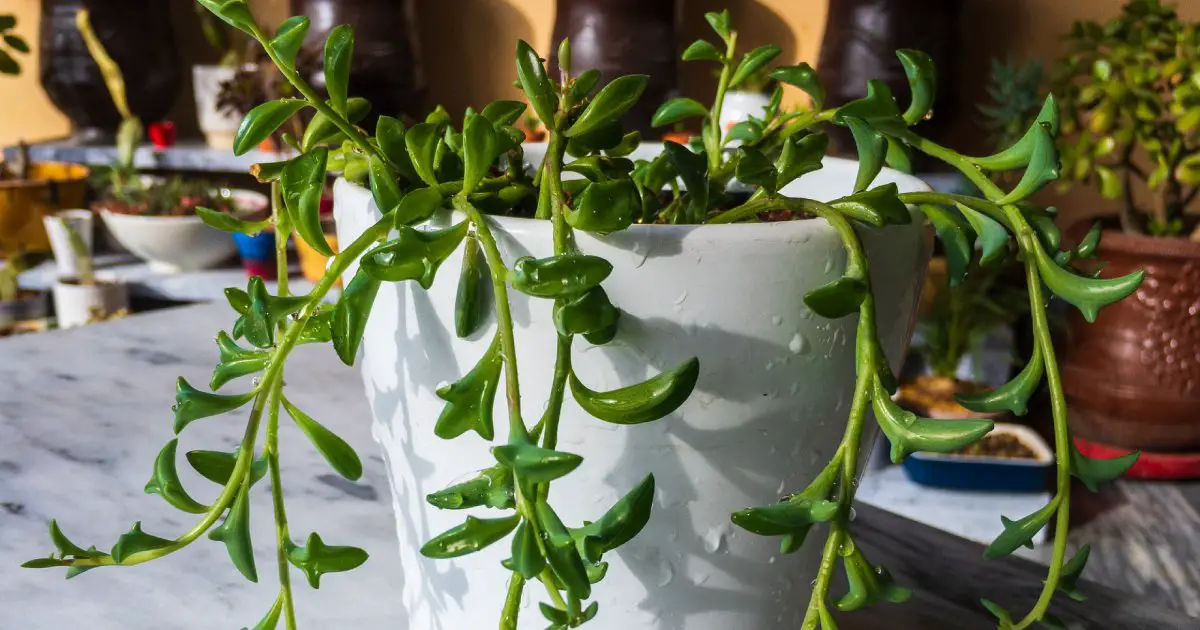
Quick Care Guide to String of Dolphins
| Sun requirements | Bright indirect indoor light or dappled outdoor sunlight preferred |
| Hardiness/Zone | Hardy outdoors only in Zones 9b+ |
| Water needs | Above average for a succulent, prefers not to dry out entirely |
| Toxicity | Poisonous to humans and pets |
| Primary growth season | May have a winter dormancy, or (indoors) may grow slowly year round |
| Typical size at maturity | Six inches tall, with trailing stems as long as three feet |
General Care
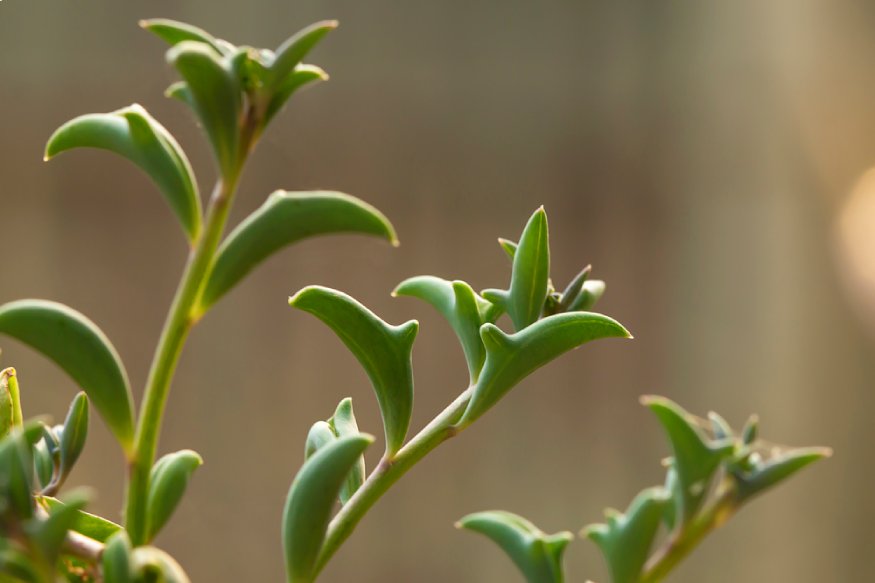
String of dolphins has leaves that are so distinctively dolphin-like that all of its common names mention them (e.g., flying dolphins, dolphin necklace, or dolphin plant). It was created as a hybrid of Curio articulatus (a.k.a. candle plant) and Senecio rowleyanus (string of peas/string of pearls), and shares many of their care needs.
It is a little more finicky than some succulents, but it’s worth the effort. It can produce flowers, but when a plant’s leaves look like a dolphin, flowers are sort of beside the point.
Where to Plant
Indoor Placement
Finding suitable plants for west-, east- and north-facing windows is always a struggle, especially succulents, but a string of dolphins will be very happy there. It doesn’t like direct summer afternoon sunlight but will tolerate bright indirect light.
If your string of dolphins gets too much sun, it may develop a temporary reddish pigmentation. This is common among succulents, like coppertone sedum. It won’t hurt the plant, and you may even like the look of it, although it may slightly stunt the plant’s growth.
Note: If your string of dolphins gets too much sunlight (specifically direct summer), it will likely sunburn. You may need to experiment to find the best location, and that location may vary at different times of the year.
Although the plant needs more consistent moisture in its soil than most succulents, it does not need additional humidity.
Some string of dolphins plants go dormant in the winter, but many indoor plants don’t get cold enough to go dormant, so they grow slowly year round.
Outdoor Placement
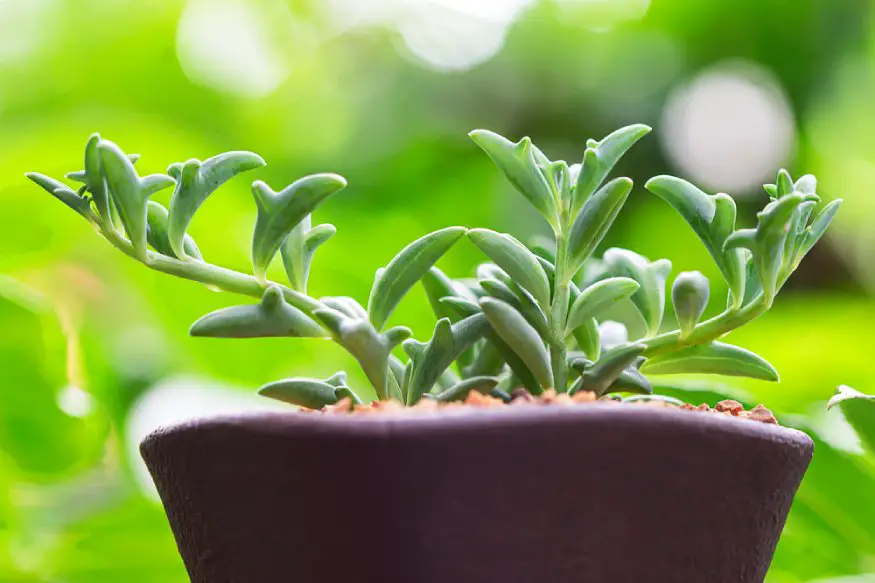
A string of dolphins can be grown in certain locations outdoors, but they are more commonly grown indoors.
Because of their trailing habit, you can grow them in a pot (hanging or otherwise), or even trailing over a rock wall. However, string of dolphins are not cold-tolerant. So, if you live anywhere cooler than USDA Zone 9b, you’ll need to grow it in a pot and move it indoors for the winter.
Note: Using a pot is always a good choice because you can change the plant’s location based on the season.
Keep in mind that a string of dolphins prefers gradual transitions. When you move it outdoors in the spring, move it outside for only a couple of hours per day at first and gradually build up to all day before leaving it outdoors at night. Moving it too quickly can cause wilting, leaf drop, etc.
This succulent is also a bit picky about how much sunlight it gets.
You should place it in an area with lots of bright indirect light. That spot should also protect the plant from the afternoon sun because direct sun exposure can result in the plant getting sunburned.
Dappled sun is great, so under a loose-leafed tree or in a planter hanging in the shade of a covered porch are good options.
Pet Access
Don’t adopt dolphins if you have other pets or small children, as they are poisonous. Like their genetic parent string of pearls, they may cause vomiting, diarrhea, and skin rashes in children and worse symptoms in pets.
It is a compact plant that works well in a hanging planter, so if you are determined to get one, you could hang it up out of reach. However, you would need to be extremely diligent about removing any leaves that might fall from it.
We believe it isn’t worth the risk when there are so many other adorable pet-safe succulents.
Container and Soil
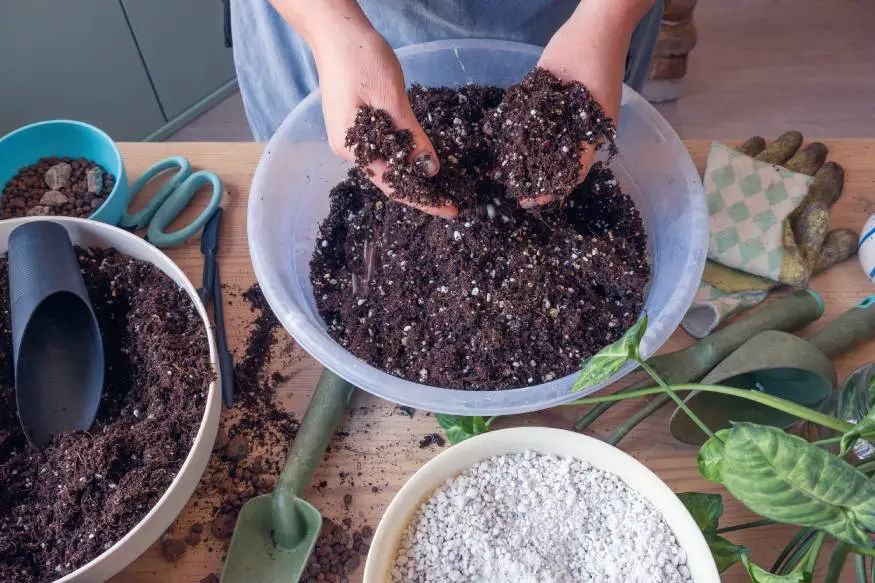
String of dolphins holds a lot of water, but, like its namesake animal, it isn’t suited for dry environments. It doesn’t like to dry out for long but is also susceptible to root rot. That means that even though it benefits from slightly more frequent watering than most succulents, it needs loose, well-draining soil and good drainage for good root health.
A hanging planter is the obvious choice for this beautiful plant, but it can grow in a regular pot.
Use a pot with a good-sized drainage hole. If your pot doesn’t have a drainage hole (for example, if it’s an indoor hanging planter), you can use the ‘pot in a pot’ method. Regardless, it is essential not to drown your dolphins.
Commercially available cactus/succulent-specific potting mixes will work, but the ideal is to mix your own potting blend for succulents. Not only is it much better for growing succulents than anything you’ll find at a big-box store, it also saves you money, and you can blend different ratios for different purposes and plant species.
You don’t have to be strict about the ratios, but a good basic recipe for growing string of dolphins is:
- Two parts organic matter, either
- A potting mix designed for cacti and succulents, or
- A mixture of half regular potting mix and half coconut coir
- One part coarse sand, and
- One part gritty amendment (such as perlite or pumice).
Watering
String of dolphins may not want to swim in water like their namesakes, but they do like a watering schedule that is a little more frequent than a typical succulent.
They prefer not to dry out completely, which often means weekly watering in the summer and less frequently in the winter.
Note: Wait until the surface (or in a big pot, maybe an inch or so of potting mix) is dry, but don’t wait for the pot to dry out entirely like you would with a cactus. If your dolphins deflate and lose their vitality, that typically means they need a drink.
Regardless of how frequently you water them, we recommend using the “soak and dry” or “dunk and soak” methods.
When you water, be careful not to get any more water on the leaves than necessary as they can rot. This can be easy with a sparse plant, but a healthy plant with a full crown dense with leaves makes it more difficult. In those cases, stick with the “dunk and soak” method.
Over the winter, water the plant as needed when the top of the soil dries out. Not before and not long after that. Just keep in mind that whether or not it goes dormant, it will not need as frequent watering in the winter.
Our succulent watering guide includes a tracking card for watering, fertilizing, and other succulent care. Keeping these kinds of notes is a great practice, especially for the first year while getting to know your string of dolphins.
Fertilizer and Maintenance
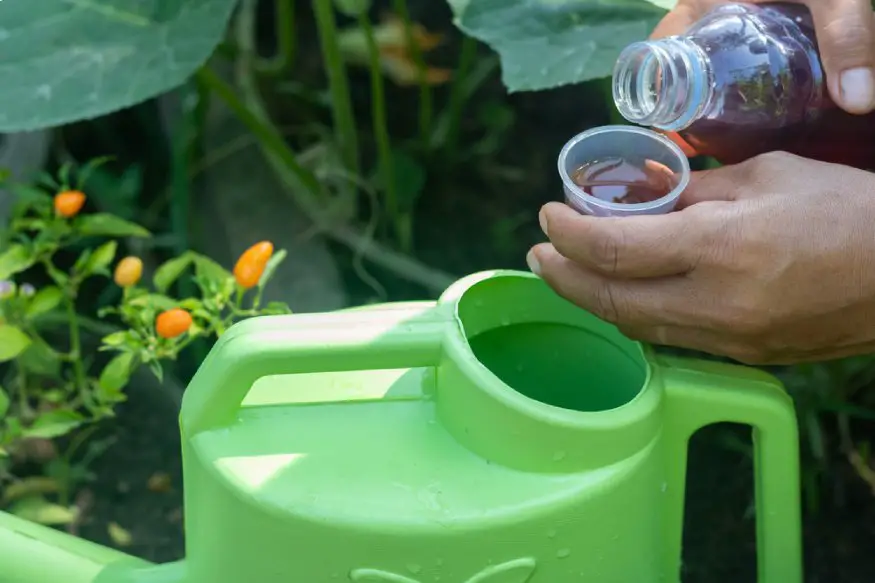
Your dolphin plant will appreciate a treat now and then. You won’t need to fertilize in the first year after repotting a string of dolphins when its soil is freshest. In subsequent years, fertilize a few times per year.
Don’t fertilize in the winter months, when its growth slows, whether or not it is in a true dormancy.
We recommend using a liquid cactus fertilizer (Espoma make a good one), ideally organic. If you use a chemical liquid fertilizer, make sure to dilute it to a quarter-strength or half-strength, based on the package instructions.
Avoid over-fertilizing because whatever excess nutrients the plants can’t absorb can burn the roots.
The best choice is to use an organic fertilizer formulated specifically for cacti or succulents and follow the package instructions.
Info: Avoid any fertilizer (chemical or organic) that has an NPK ratio where the nitrogen (N) is higher than the phosphorus (P) or potassium (K). An even balance is preferable for succulents.
Your string of dolphins won’t need pruning, but it won’t hurt the plant and can help you give the plant a shape you like (for example, if a few stems are much longer than the others, you can trim them to match). If you do prune it, use a sharp, sterile knife or pruning shears.
Repot your string of dolphins roughly every few years. It’s also a good idea to repot it when you first bring it home to ensure the roots are healthy and the pot contains appropriate potting mix and adequate drainage.
Propagation
Stem propagation of string of dolphins could hardly be easier. You can propagate any piece that falls off (or you cut off) your plant. You may notice that your string of dolphins is already growing fine, hair-like roots directly from the stem. These mean the propagated stems can grow roots in the soil quite quickly.
String of dolphins plants look best and are healthiest when full and bushy, so you don’t want to propagate a single strand. Ideally you will have a bunch of pieces.
- Simply lay the pieces on the surface of the potting mix.
- Fill the pot with cuttings as much as possible.
- Keep it moist (ideally without getting the stems or leaves themselves wet, and the stems will likely take root.)
- You can leave the entire stem lying in contact with the surface of the soil or leave one end draping over the edge of the pot, it makes little difference.
If you have a piece with no roots yet, you can tuck the end of the cutting down into the soil to encourage rooting.
You may also want to use stem cuttings to increase an existing plant’s bulk rather than propagation to create a new plant. If you’re willing to sacrifice a little length, add your trimmed ends to the pot with the existing plant to make it grow bushier.
If you’re new to this process, check out our guide for more tips on propagating succulents.
Common String of Dolphins Problems
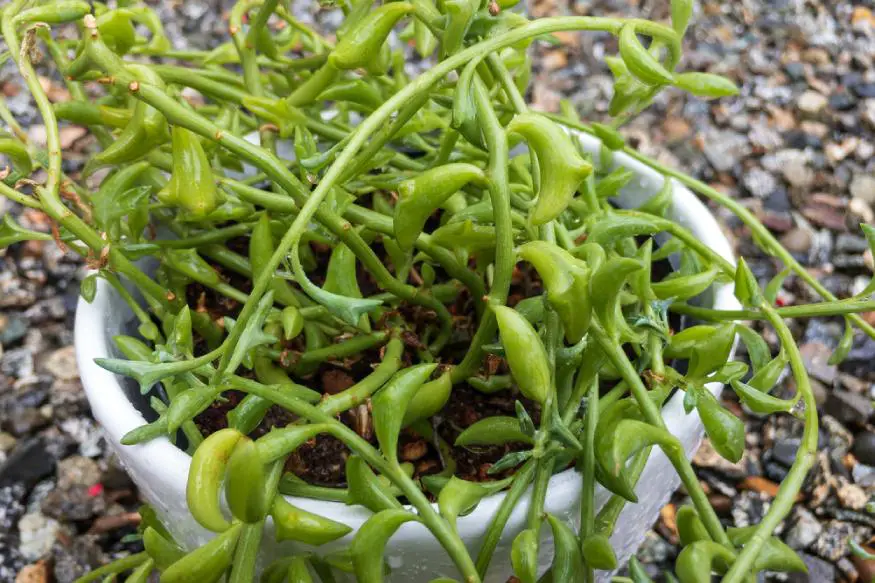
String of dolphins likes a lot of indirect sun exposure, or else it can get leggy. Still, it is also susceptible to sunburn, especially from direct afternoon light on an outdoor plant.
It likes to be watered more frequently than many succulents, but it retains a lot of water and is susceptible to root rot.
One common sign a string of dolphins is in the wrong environment is leaf shrinkage. If your leaves look dehydrated, your plant may get too much heat or inadequate water or light.
Senecio peregrinus is also less likely to have serious problems with insects like aphids and mealybugs because the plant structure is looser instead of packed tight with lots of hidden crevices for them to hide in. When you catch an infestation early, it is much easier to treat.
